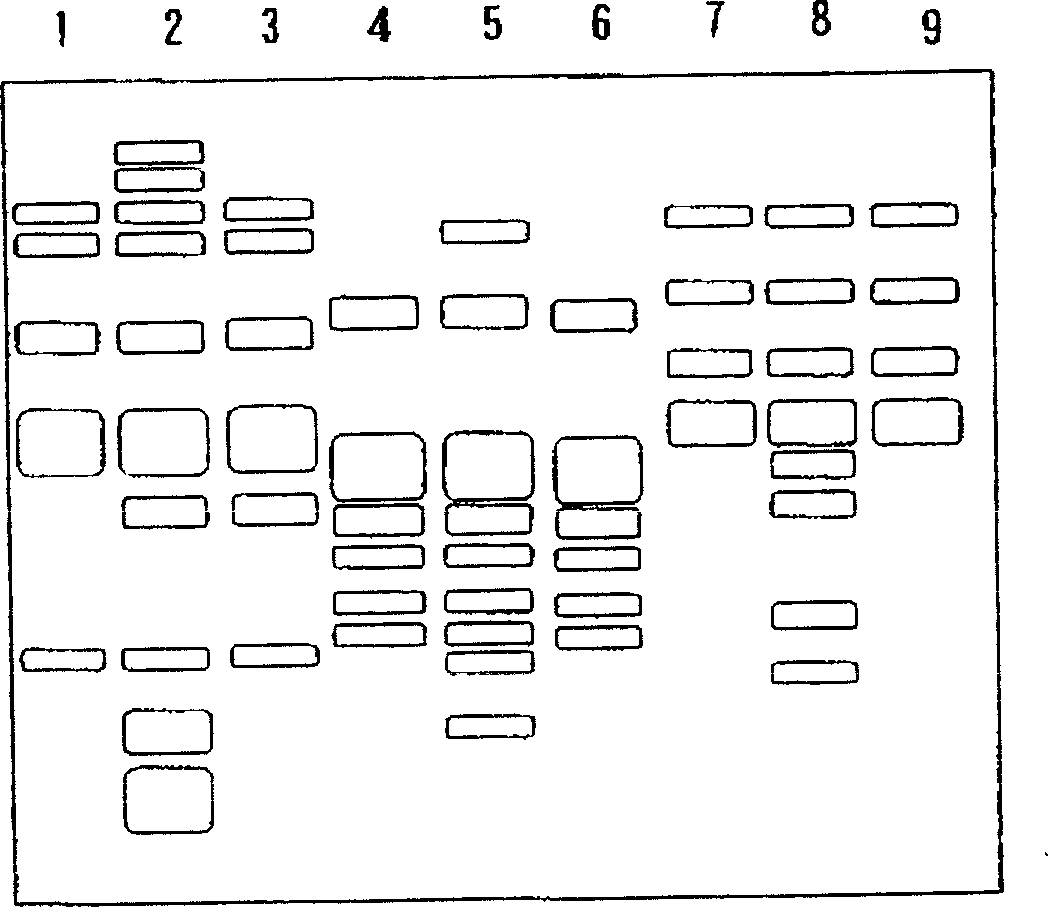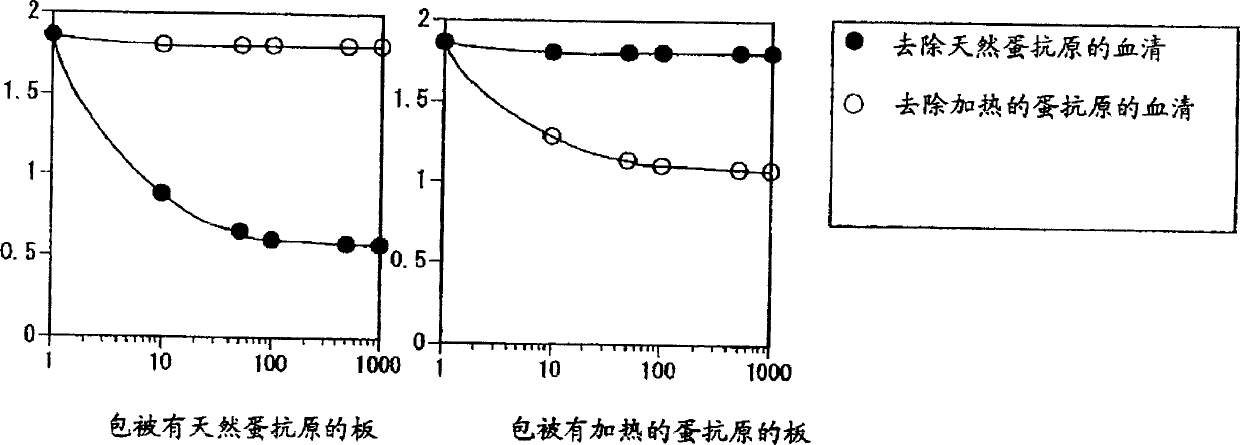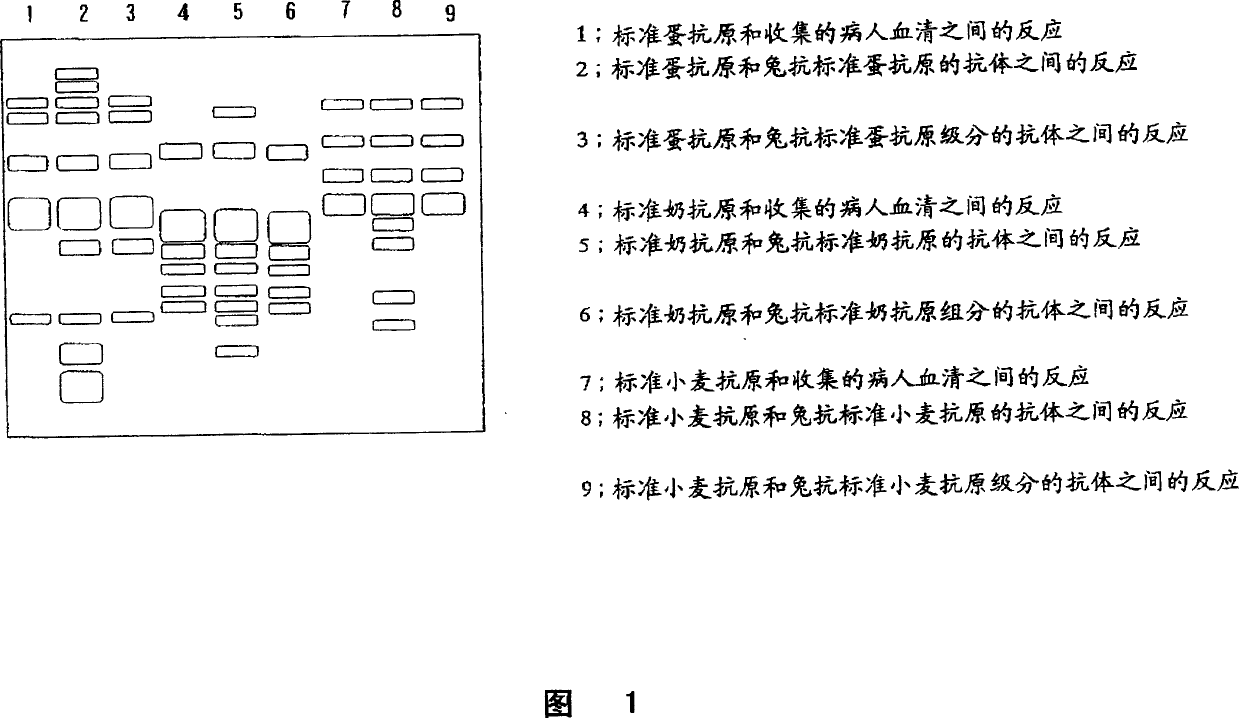Food allergens, method of detecting food allergens and method of detecting food allergy-inducing foods
A food allergy, food technology, applied in the field of food allergens, detection of food allergens and detection of food allergens that induce food allergens, can solve the problems of food quantification that cannot detect allergens, is not applicable, and cannot induce allergic reactions, etc.
- Summary
- Abstract
- Description
- Claims
- Application Information
AI Technical Summary
Problems solved by technology
Method used
Image
Examples
Embodiment 1
[0055] Embodiment 1 (preparation of standard antigens of various foods)
[0056] (1) Eggs, quail eggs and duck eggs
[0057] 1kg of eggs were shelled, homogenized, freeze-dried, and ground to prepare standard egg antigens. 10-g antigen was suspended in 10-fold volume of pH 7.0 phosphate buffer saline (hereinafter abbreviated as PBS), divided into 5 test tubes, and heated at 60, 80, 100, and 120 degrees Celsius for 30 minutes without heating or respectively. Then, mix together and mix well to prepare the samples. Samples of quail eggs and duck eggs were prepared in a similar manner.
[0058] (2) milk
[0059] Stir 1L of milk at low temperature to make it solidify, deposit milk fat, and filter it through absorbent cotton. This procedure was repeated 3 times, and the filtrate was lyophilized and finely ground to prepare standard milk antigens. Similarly, samples were prepared as described in (1).
[0060] (3) Wheat and rice
[0061] At room temperature, 1 kg of wheat ...
Embodiment 2
[0068] Embodiment 2 (various purified food allergens)
[0069] (1) Purified egg allergens
[0070] Suspend ovalbumin, one of the main allergens in eggs, in 10 times the volume of pH 7.0 phosphate buffered saline (hereinafter abbreviated as PBS), and divide it into 5 test tubes, without heating or at 60 and 80 respectively. , 100, 120 degrees Celsius heating for 30 minutes. Then, mix together and mix well to prepare the samples. Ovomucoid samples were prepared in a similar manner. Ovalbumin and ovomucoid are known proteins located in the egg white.
[0071] (2) Purified milk allergens
[0072] Samples of casein, β-lactoglobulin and α-lactalbumin were prepared in a similar manner as described in Example 2(1). β-lactoglobulin and α-lactalbumin are known as proteins located in milk whey proteins.
Embodiment 3
[0073] Embodiment 3 (preparation of antibody)
[0074] (1) Preparation of rabbit antibodies against various standard food antigens
[0075] Various samples prepared in Example 1 were emulsified with Freund's complete adjuvant (for the first inoculation) and incomplete adjuvant (for the second and subsequent inoculations), and inoculated Japanese white rabbits 4 to 6 Second-rate. During vaccination, partial blood is drawn to determine the production of antibodies against the antigen, and then the whole blood is drawn. In this way, antibodies are produced.
[0076] (2) Preparation of antibodies against various purified food antigens
[0077] Similarly, antibodies against various purified food antigens were prepared as described above.
PUM
 Login to View More
Login to View More Abstract
Description
Claims
Application Information
 Login to View More
Login to View More - R&D
- Intellectual Property
- Life Sciences
- Materials
- Tech Scout
- Unparalleled Data Quality
- Higher Quality Content
- 60% Fewer Hallucinations
Browse by: Latest US Patents, China's latest patents, Technical Efficacy Thesaurus, Application Domain, Technology Topic, Popular Technical Reports.
© 2025 PatSnap. All rights reserved.Legal|Privacy policy|Modern Slavery Act Transparency Statement|Sitemap|About US| Contact US: help@patsnap.com



